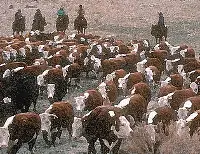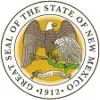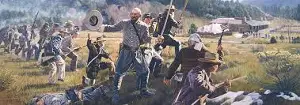The Making of the 50 States: New Mexico

As in many other states, the more American settlers arrived, the more they went to various lengths to convince Native Americans to leave their ancestral homes. The famous explorer Kit Carson was part of a force that strongly encouraged members of the Apache and Navajo tribes to relocate to reservations. One of these forced relocations has come to be known as the Long Walk of the Navajo, which was several dozen forced marches that resulted in many deaths and much ill will. Part of this ongoing conflict, the Apache Wars, ended in 1886, with the third and final surrender of famed Apache leader Geronimo. The U.S. Army operated a coal mine near what is now Socorro in the 1860s. Although gold was discovered more than once, the strikes weren't large and the rush to mine them wasn't as strong as those in other states. The railroad arrived in 1878, and business, particularly coal, boomed. Soon, the new town of Albuquerque was a major center of population and industry. 
Also strong, at this time and from several years before, was the cattle industry. John Chisum was one of the more well-known cattle barons, as was Charles Goodnight, who had blazed the first cattle trail through the area in 1866. The longest of the cattle trails, the Butterfield Trail, had a major stop in New Mexico, at Fort Fillmore. Farmers in the early 1890s began a large irrigation project, augmenting existing "dry farming" efforts. The cowboy culture was big in the West. New Mexico was the location of a few iconic frontier events:
New Mexico did contribute to the war effort during the Spanish-American War. Theodore Roosevelt, then in the service, recruited from New Mexico some of the men that made up his "Rough Riders," who took part in a few famous battles during the war. 
In 1906, residents of both the Arizona Territory and the New Mexico Territory voted on a proposal for statehood for the two territories to be combined into one state. A majority in New Mexico voted for the measure, but a majority in Arizona voted against, so the measure did not pass. New Mexico set about drafting its own constitution in 1910, and New Mexico joined the Union on Jan. 6, 1912; the capital was Santa Fe. First page > In the Beginning > Page 1, 2 |
|
Social Studies for Kids
copyright 2002–2024
David White



 New Mexico was largely exempt from the fighting during the
New Mexico was largely exempt from the fighting during the 
